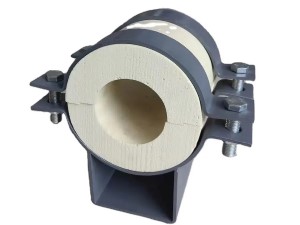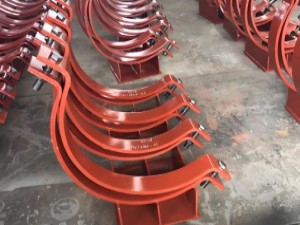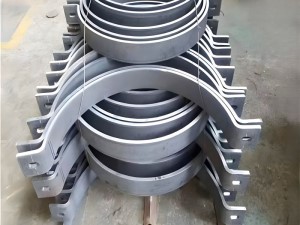How Does Stainless Steel Resist Corrosion?
Stainless steel resists corrosion because of the added chromium (and sometimes other additional elements). Corrosion occurs on carbon steel when the iron from the steel is allowed to combine with oxygen in its surrounding environment. The chromium in stainless steel is able to prevent this as it combines with the oxygen and forms a passive layer of chromium oxide. This layer of chromium oxide prevents the formation of iron oxide, (also known as rust), in many situations, so long as the chromium content of the steel is great enough. Different grades of stainless steel designate and dictate the required amounts of chromium and other alloying elements, which helps to indicate the level of corrosion resistance.
How Does Galvanized Steel Resist Corrosion?
Galvanized steel resists corrosion because of the zinc coating covering the carbon steel. The zinc layer serves two purposes:
It prevents oxygen from coming into contact with the steel, therefore reducing the possibility of corrosion.
Even if the zinc coating were to experience minor damage and expose small amounts of iron to the atmosphere, the nearby zinc on the rest of the coating is more reactive than steel. This makes the zinc more likely to attract an oxygen molecule than the iron, which prevents rust from forming on the steel.
The Difference Between Stainless Steel and Galvanized Steel
Stainless steel usually has better corrosion-resistant properties than galvanized steel. If the stainless steel becomes scratched, it can still maintain corrosion resistance around the affected area. However, if the zinc layer of galvanized steel is damaged, it can leave the underlying carbon steel exposed and vulnerable. And because galvanized steel is often dipped in zinc in large sheets then cut to size, the edges where the cuts are made are left exposed making it possible for rust to occur.
Stainless steel is also generally considered to be more aesthetically pleasing than galvanized steel, as stainless typically has a shiny, silver-like color, versus the dull-grey pattern of galvanized steel. However, stainless steel is also often more expensive than galvanized steel.
Applications of Stainless Steel
Stainless steel is typically used in applications where the risk of corrosion is a major concern and not permissible. Areas of use for stainless steel include:
Food processing equipment
Pharmaceutical manufacturing equipment
Aerospace engine components
Kitchen appliances
Certain types of fasteners
Applications of Galvanized Steel
Galvanized steel is used for applications where corrosion is not desirable, but small amounts may be permissible and aesthetics are not much of a concern. Applications for galvanized steel include:
Duct work
Automotive components
Some types of fasteners
Structural beams
Metal cabinetry
Railing
Walkways
Traffic signs
Electric poles
At HTPIPE, we supply a wide range of metals for a variety of applications.
Our hot rolled and cold rolled steel is available in a wide range of shapes including: bars, tubes, sheets and plates. We can cut metal to your exact specifications.
Contact HTPIPE sales1@htpipe.com. You can also find me directly on whatsapp +86 13592592753





